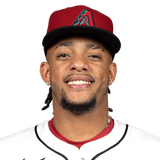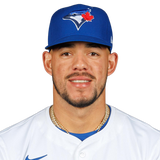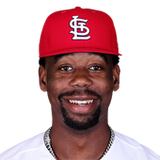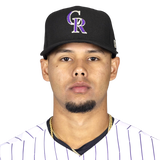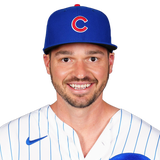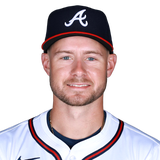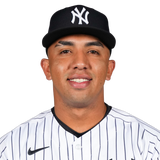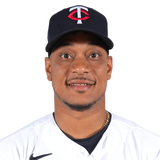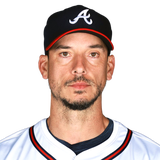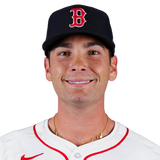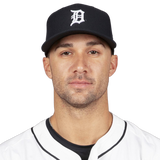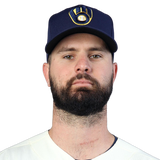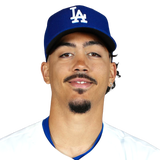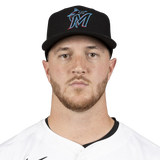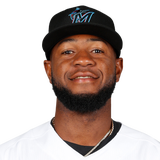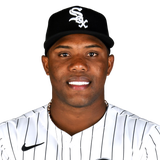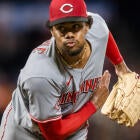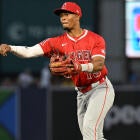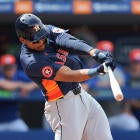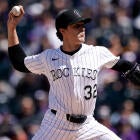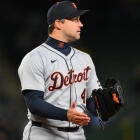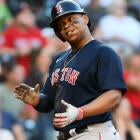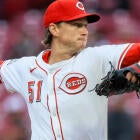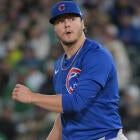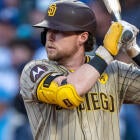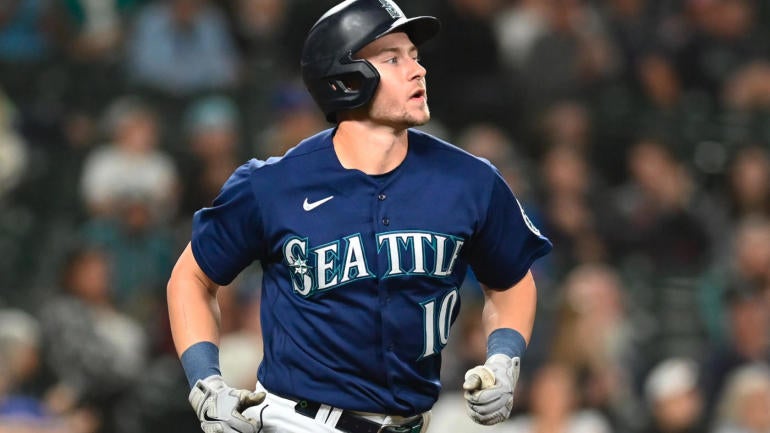
You remember my Sleepers 1.0, right? So you get the gist of what I'm trying to do here?
OK, well, my sleepers don't cover every player who I think will exceed expectations this year. I'll write about breakouts and underrateds elsewhere. My goal here is to identify the players who people are genuinely sleeping on, as in drafting them in a way that doesn't seem to account for their upside.
They're not the most high-end targets, in other words. Granted, they're not the most low-end targets either. I'll have a separate article for deep sleepers later on.
Just in case you missed the players I highlighted in Version 1.0, I'll revisit them a little further down. First, though, let's check out the new additions.
The Newcomers
Ketel Marte, 2B, Diamondbacks
| ||||||||||||
FantasyPros ADP: 196.2
How could we have gotten to this point with Marte, who's barely being drafted inside the top 200, behind the likes of Brandon Drury and Thairo Estrada? As recently as 2019, he was putting up borderline first-round numbers, batting .329 with 32 homers and a .981 OPS, and before you say it was an aberration, note that he also hit .318 with a .909 OPS in 2021. In fact, in the three years prior to last year, he had a combined .318 batting average and .917 OPS. These are numbers you almost never see at second base.
He's not allowed one little misstep, at age 28, still plenty young enough to recover? OK, so maybe the pandemic-shortened 2020 season was also a misstep, but even so, we're talking about premium production for two of the past four years. Amid his struggles last year, his Statcast page was still lit up in red, his max exit velocity ranking in the 96th percentile, his average exit velocity in the 72nd percentile and his strikeout rate in the 70th percentile. With those kinds of batted-ball metrics, it wouldn't be surprising to see him bounce back. We've seen him do it before, after all.
Maybe the presumption is that he's a casualty of the juiced ball being gone, but that's not what the data shows. He seems like a safe bet to bounce back in batting average, at least, and has an outside chance at stud numbers at a position where few do.
Jose Berrios, SP, Blue Jays
| ||||||||||||
FantasyPros ADP: 212.6
My case for Berrios is similar to the one I made for Jack Flaherty in Sleepers 1.0. In the five years prior to this one, we drafted him like a borderline ace (and unlike Flaherty, he more or less made good on it). So after one bad year, we're tossing him on the scrap heap? He's only 28. His velocity didn't decline. His spin rates held steady. He maintained a low walk rate. It didn't make sense why he declined so precipitously, and so it wouldn't be surprising to see him bounce all the way back.
I don't think we'd discard Berrios so quickly if this was still the juiced ball era, when reliable starting pitchers were so scarce that anyone who proved trustworthy in the not-so-distant past got every benefit of the doubt (hence Flaherty's repeatedly high ADP). One year of pitching surplus has so rewired our thinking that there's no longer any grace for a down year.
For what it's worth, the Blue Jays think they've identified the issue as poor fastball location. Berrios left the pitch over the plate against lefties, and as Mitch Bannon of SI.com points out, they crushed it to the tune of a .381 batting average and 92.5 mph average exit velocity (as compared to .239 and 89.1 in 2018-19). That's more than I really need to know, though. Here's what I know: when he's right, Berrios is a reliable-innings eater on a playoff-bound team, and by the normal ways we measure these things, it doesn't seem like he went that wrong last year. For a pick outside of the top 200, I'm willing to look past the potential downside.
Jordan Walker, 3B, Cardinals
| ||||||||||||
FantasyPros ADP: 237.4
By featuring Walker here only now, in Sleepers 2.0, I fear I'm late to the party. Truth is I had been trying to draft the consensus top-five prospect in every league all along. My hope, however unlikely, was that he'd make the opening day roster, and my concession was that he'd be up soon afterward if he didn't. But now, with him setting Grapefruit League on fire (most notably with a 4-for-4, two-homer performance), drafting him has gotten harder. His NFBC ADP jumped 80 spots in just one weekend, putting him ahead of players like Chris Sale, Vaughn Grissom, Anthony Rizzo. Of course, NFBC features some of the most researched and financially invested players around. Maybe the schlubs in your league won't be so attuned?
Even if that becomes Walker's going rate everywhere, he'd still qualify as a sleeper. His opening day prospects look all the more promising, with manager Oliver Marmol acknowledging the 20-year-old could force his hand. "I don't know what the tipping point is, but he's continuing to show he's capable," Marmol said. "We went into this camp saying there is going to be real competition and that's what he is making this -- a real competition. He's come in ready, and I'm enjoying watching it."
I'm not as confident in Walker's opening day chances as I was in Julio Rodriguez's a year ago. The Cardinals have an outfield surplus -- led by Tyler O'Neill, Lars Nootbaar and Dylan Carlson -- while the Mariners had a scarcity. But Walker is a prospect of a similar caliber. In his recent two-homer game, he hit one 470 feet and the other 115 mph. And oh yes, he can run. Best of all, he'll be eligible at the two biggest positions of need, retaining third base eligibility from his time in the minors and eventually picking up outfield eligibility in the majors.
Ezequiel Tovar, SS, Rockies
| ||||||||||||
FantasyPros ADP: 268.6
I'm a believer in the Braves' Vaughn Grissom. He's one of my breakout candidates for this year. Still, I have no idea why he's being drafted 90 spots ahead of Tovar. Grissom is competing for a job. Tovar already was one. Grissom will be playing half his games at a venue not so different from any other, Tovar at the BABIP-boosting hitter's paradise that is Coors Field. I suppose Grissom has the advantage of slightly more big-league experience, but it was a mixed bag, his torrid start last August followed by a frigid finish that got him benched for the postseason.
As much as I like Grissom, it's easy to pass him over for a middle infield slot knowing who's available to me later. With the kind of numbers Tovar put up between Double- and Triple-A last year, the 21-year-old is a legitimate five-category threat. I'd be more cautious about the batting average if, again, he wasn't playing his home games at Coors Field, where the enormous outfield required by the thin air allows base hits to drop in at a much higher rate.
I'm comparing Tovar to a trendy pick like Grissom not to denigrate Grissom but to demonstrate just how badly Tovar is being overlooked. Between the certainty of his role, the scope of his skills and circumstances of his team, he may be the single most undervalued player in drafts right now.
Trey Mancini, 1B/OF, Cubs
| ||||||||||||
FantasyPros ADP: 282.6
I've been slow to come around to Mancini, having initially taken only a cursory look at his numbers from the past two years and decided I could do without them. But a recent draft forced me to dig deeper, and I liked what I saw. For starters, his max exit velocity last year was 80th percentile, and it's been much higher than that in previous years. Max exit velo is the most reliable measure of raw power and suggests that Mancini's lackluster production had nothing to do with the elimination of the juiced ball.
So what would explain it? Well, two years ago, he was coming back from colon cancer, and his energy level wasn't up to snuff. He clearly faded down the stretch, homering 19 times over the first four months compared to twice over the final two. As for last year, he, like every other Orioles right-handed hitter, fell victim to a ridiculous remodel that moved the left field fence back 30 feet. He still hit a respectable .268 before being traded to Houston, where inconsistent playing time caused him to develop a leak in his swing, according to The Athletic. His hands weren't in sync with the rest of his body, and it compromised his power.
The swing looks right again, and early returns this spring have been promising. Now that Mancini is fully energized and back in a fairer environment, those impressive batted-ball metrics should shine through again. His 2019 season, when he hit .291 with 35 homers, was probably the absolute high point, but hitting .275 with 30 homers seems within the realm of possibility.
Jarred Kelenic, OF, Mariners
| ||||||||||||
FantasyPros ADP: 289.8
If only spring games counted ... it looked like a BP pitch, though ... he's a Quadruple-A player who can't handle it when the games really count ... don't do this, Scott.
These are the sort of replies I got when I simply tweeted out a clip of Kelenic's third home run this spring, which was hit to the opposite field off a lefty.
Jarred Kelenic - Seattle Mariners (3)* pic.twitter.com/5uKQLqbwNy
— MLB HR Videos (@MLBHRVideos) March 1, 2023
I mention this not in the spirit of woe-is-me but simply to point out how "out" everyone is on Kelenic, a former tip-top prospect who has batted .168 in about a season's worth of big-league at-bats. Having been burned by his past, they're now sleeping on his potential, which makes him, in the strictest sense, a sleeper.
Here's his fourth home run of the spring, by the way, hit off stud closer Devin Williams:
.@jarredkelenic just cleared the batter's eye 😳 pic.twitter.com/TjhjcCa5dR
— Seattle Mariners (@Mariners) March 5, 2023
He's doing this basically every time he plays. I haven't even talked about his first and second home runs, hit on the same day Feb. 26. They traveled 428 and 438 feet and were two of three balls he hit in excess of 107 mph that day. Only four players last season hit three balls that hard in a single game: Aaron Judge, Yordan Alvarez, Joc Pederson and Oneil Cruz. It puts Kelenic in rare company for quality of contact, and he keeps making contact of that quality this spring. You won't find a clearer demonstration of upside, and such upside from a 23-year-old should have us all swinging from the rafters.
But we're not because he didn't do it at ages 21 and 22, when most players haven't even broken into the bigs yet. I'll admit to having some reservations until I see him wallop a breaking ball, but it's not like he sat on his hands this offseason. He worked with new hitting coaches and is standing much more relaxed at the plate now. Most significant is that when he's about the 300th player drafted, the risk is zero. Don't pass on that potential reward out of some misguided sense of pride.
Oswald Peraza, SS, Yankees
| ||||||||||||
FantasyPros ADP: 307.6
In the weeks since Sleepers 1.0 came out, we've learned that Peraza is indeed the favorite for the Yankees starting shortstop job. Manager Aaron Boone won't reflexively stick with Isiah Kiner-Falefa there, like he did last September. The chance for more offense will precipitate the switch, provided Peraza takes care of business this spring.
So it's probably worth familiarizing ourselves with what sort of offense he brings to the table. In 99 games at Triple-A Scranton/Wilkes-Barre last year, the 22-year-old had 19 homers and 33 steals. That's a 162-game pace of 31 homers and 54 steals. And here's the kicker: playing in the Northeast during an unseasonably cold April and May, Peraza got off to a frigid start. He hit 14 of those 19 home runs in the 53 games leading up to his call-up, batting .316. Honestly, what doesn't he bring to the table?
Judging from his exit velocity, he's probably not a 30-homer guy when all's said and done. But a 15-homer, 40-steal guy with the capacity for a decent batting average would still be a dream as a late-round middle infield option. Maybe it's the presumed threat of Anthony Volpe, who likely isn't a shortstop long-term. Maybe it's confusion with Oswaldo Cabrera, a similarly named utility player who also got a look with the Yankees last year. Whatever is causing Peraza to fly under the radar, take advantage.
The Holdovers
Jorge Polanco, 2B, Twins
| ||||||||||||
FantasyPros ADP: 151.4
Odd-year Polanco has tended to be the best Polanco, and indeed, the 29-year-old followed up a career-best 33-homer 2021 with ... whatever happened last year. But a deeper dive into the skill indicators suggests the production shouldn't have slipped by as much as it did. His percentile ranking for both average exit velocity and max exit velocity was virtually the same as in 2021, and he actually improved his barrel rate to a career-best 10.2 percent, which is often the best shorthand metric for whether a player had a productive season.
Of course, the league became a harder place to hit in general last year, and it's possible Polanco is another casualty of it. But he doesn't quite fit the profile. For one thing, he underperformed both his xBA and xSLG last year, numbers that took into account the changed hitter environment. He also excels at pulling the ball in the air, which is a good way to maximize power in a post-juiced ball league.
Maybe you're not actually worried about the home runs given what the prorated total would have been if he hadn't lost time to back and knee injuries, but part of what I like about Polanco is the many ways he could stand to improve. His consistently high line-drive rate in conjunction with a consistently low strikeout rate should give him a high batting average ceiling -- one he realized with a .295 mark in 2019 -- and his 70-to-75th percentile sprint speed makes him a prime candidate to take advantage of the new pickoff limitations this year. A 25-homer, 20-steal season doesn't seem out of reach, and at a position with so few studs, it's something to dream on.
Chris Sale, SP, Red Sox
| ||||||||||
FantasyPros ADP: 152.6
At this time last year, Justin Verlander was the longtime ace who I thought was being unfairly dismissed coming off surgery, and well, he went on to win the AL Cy Young. But as much as I savored that discount, Sale is so far going 60 picks later in drafts. To be fair, it's been a long road back for the left-hander, whose last time pitching anywhere close to a full season was before anyone had heard of COVID-19 -- and even then, he wasn't that good. But that's also when the Red Sox discovered he needed Tommy John surgery, which earns him a pass for the uncharacteristic performance.
So what about since then? He returned for nine starts in 2021 and looked great, compiling a 3.16 ERA while struggling a bit with location, as is typical coming off Tommy John. The performance had many of us geared up to draft him last season, but then a stress fracture in his ribcage sidelined him for the start of the year. When he finally returned, he lasted only two starts before fracturing his wrist. Both injuries were freak occurrences that shouldn't raise questions about his long-term effectiveness, so I suspect the deflated cost is more a reflection of total burnout and not wanting to be played for a sucker again. Like Verlander last year, a strong spring could send Sale's cost soaring, so if you can get in before then, absolutely take advantage.
Charlie Morton, SP, Braves
| ||||||||||||
FantasyPros ADP: 156.0
The biggest reason for concern with Morton is his 39 years of age and the seeming improbability of a player that old reversing the tides of decline. But he still had 205 strikeouts last year, ninth-most in the majors, to go along with a swinging-strike rate that was almost identical to his dominant 2021. Normally, a pitcher's decline is reflected most in his stuff, but that's not where Morton fell short in 2022. Rather, in a year when home runs declined across the league, he served up a career-high 28, 10 more than ever before.
It's not hard to see why. His ground-ball rate plummeted. For the first time in his career, he became a fly-ball pitcher, struggling to bury his curveball as he had all those years previously. But again, it wasn't a matter of stuff. He was still spinning it at a mesmerizing 3,000 rpm. Something must have been a little off in his delivery or with his location to get such discordant results -- something much more correctable than a loss of skill -- and I think it's telling that the Braves, an organization with few misses lately, decided to bring him back for another $20 million, the same amount the Dodgers gave Clayton Kershaw. I still see a potential top-15 pitcher here, but the concerns over his age have dropped Morton outside of the top 45 by ADP.
Triston Casas, 1B, Red Sox
| ||||||||||||
FantasyPros ADP: 211.0
Casas never hit more than 20 home runs in a minor-league season and never batted better than .281. It's those relatively modest numbers, not to mention him playing the deepest position in Fantasy, that I think have him flying under the radar right now. This is a significant prospect, one who drew comparisons to Freddie Freeman and Joey Votto coming up through the Red Sox system. He never spent much time at any stop, his playing time further diminished by injuries and a stint with the U.S. Olympic team, but he showed during his big-league trial late last year the sort of offensive force he could be.
By batting .197, you say? It's more about him reaching base at a .358 clip despite batting .197 and smacking three of his five home runs to the opposite field -- two decidedly Freeman-esque traits. I can't say whether Casas will compete for a batting title as a rookie, but I feel confident he will at some point -- and with enough power to measure up at first base. The Red Sox seem to be all-in as well, dumping Eric Hosmer this offseason to clear a path for Casas while making intimations about signing him to a long-term deal.
Jack Flaherty, SP, Cardinals
| ||||||||||||
FantasyPros ADP: 214.8
My initial take on Flaherty when putting together my rankings for 2023 was "jeez, enough already." The guy may have looked like an ace in his first two years in the league, but after three years of troubles, some health-related, some performance-related, he no longer deserves a pass. The pitching landscape has changed. The criteria for what makes a good one has broadened. The need for such wishcasting is behind us.
So why am I calling Flaherty a sleeper? Because it's clear everyone else feels the same way I did. Quite simply, nobody's buying it anymore, which is the textbook definition of a sleeper. A couple of part-time infielders (Josh Rojas and DJ LeMahieu) are being drafted ahead of Flaherty, and yet at 27, it's still plausible he bounces back to his early-career dominance.
The stuff is basically there. Sure, he hurried back from a shoulder injury in June and struggled with velocity, but after another shutdown period, he came back throwing about as hard as usual. His 2021 performance in between injuries was fine, and while his 2020 performance wasn't, that year was especially weird for the Cardinals, who bore the brunt of multiple COVID shutdowns. It's looking back through rose-tinted glasses, I realize, but at the cost, Flaherty is basically no risk, all reward.
Jesse Winker, OF, Brewers
| ||||||||||||
FantasyPros ADP: 237.6
Winker was a common bust pick after the Reds dealt him to the Mariners last March, and well, bust he did. But it was a little much, right? It's one thing to say, hypothetically, a guy will lose 33 percent of his home runs and struggle to stay in the lineup against left-handers. It's another to say his OPS will go from .949 to .688, as actually happened. And then when we come to find out after the season that he was playing through a knee injury that ultimately required surgery, well, there may have been a clearer reason for his struggles than simply the dimensions of T-Mobile Park. An injury would better explain why his average exit velocity dropped by more than 3 mph, after all.
Whether Winker's struggles were primarily tied to his health or venue, both should be improved now that he's been traded to the Brewers. And if you look back on who he was prior to the season that never should have been, you'll find a career .288/.385/.504 slash line. The numbers are much worse against left-handers, sure, but the platoon risk shouldn't scare you away from Winker at his current rate. And while he's a career .297 hitter with a .930 OPS at Cincinnati, he's a career .344 hitter with a 1.032 OPS at his new home in Milwaukee.
Miguel Vargas, 1B, Dodgers
| ||||||||||||
FantasyPros ADP: 256.4
The Dodgers basically sat out free agency this offseason, allowing Trea Turner, Cody Bellinger and Justin Turner to walk and bringing in J.D. Martinez, Jason Heyward and Miguel Rojas (via trade) to replace them. Meanwhile, Ken Rosenthal reported in December that they're looking to go full youth movement this year, perhaps in anticipation of making a run at Shohei Ohtani next offseason.
It's hard to imagine Vargas wouldn't be a part of that, and indeed, they're giving every indication he'll be their primary second baseman this year, even playing him there while he's recovering from a fractured finger that prevents him from swinging a bat. Swinging a bat has never been his problem. Across four minor-league seasons, he never hit less than .304. Some question whether he'll develop more than 20-homer power, but with his natural hitting instincts and athletic 6-foot-3 frame, I'm not putting it past him. He's also fast enough to steal bases in a league that's angling for more of them, so we're talking about a potential five-category threat in a lineup that still won't be lacking in star power.
And if he gains outfield and third base eligibility in addition to second base (which seems plausible given his minor-league history and the Dodgers' preference for versatility) even better.
Trevor Rogers, SP, Marlins
| ||||||||||||
FantasyPros ADP: 276.2
After successfully identifying Rogers as a bust last season, I'm ready to buy low now, having caught a glimpse of something that probably went unnoticed by most. I mean, the whole reason I could call him a bust last year is because he was so good as a rookie the year before, compiling a 2.64 ERA, 1.15 WHIP and 10.6 K/9, so we know what the upside is. And in between a midseason IL stint for back spasms and a season-ending stint for a strained lat, I think he flashed it again.
In the three starts he managed to complete between the injuries, he had a 2.95 ERA, 0.93 WHIP and 10.8 K/9, registering swinging strikes at a 13.1 percent rate compared to 10.7 percent in the 19 preceding starts. And remember, he was coming off injury. His final rehab start saw him strike out 12 over six no-hit innings. At the time, he said he had fixed his mechanics. Granted, I wish he had more than three starts to prove it, but if he had, then he wouldn't be a sleeper, would he?
Most see the full-season numbers and want no part of him anymore, a guy mentioned in the same breath as Shane McClanahan and Alek Manoah at this time a year ago. But if Rogers did in fact figure something out when he says he did, he'll be well worth this cost.
Bryan De La Cruz, OF, Marlins
| ||||||||||||
FantasyPros ADP: 281.2
The full-season numbers won't do De La Cruz justice. It's only what happened from Sept. 7 on that makes him so interesting. While that's a small sample, it's also a meaningful one, coming right after stint at Triple-A in which he refined his mechanics and even more his approach. He seemed to develop a better understanding of what pitchers were trying to do with him and wound up hitting .388 (33 for 85) with six home runs and 10 doubles over his final 25 games.
What's even more convincing is the data -- not just for those 25 games but the entire year. He crushed the ball, delivering an average exit velocity in the 82nd percentile. His xBA was .287 and his xSLG .498. Just for perspective, those same numbers for Rafael Devers were .282 and .497. It didn't exactly come out of nowhere either. De La Cruz hit .324 with an .880 OPS for the Astros' Triple-A affiliate before coming over in the Yimi Garcia trade two years ago. The 26-year-old won't have much help in the Marlins lineup and hasn't proven enough to have a long leash, but the skills are there and the price is right.
Wil Myers, 1B/OF, Reds
| ||||||||||||
FantasyPros ADP:295.4
On the one hand, it seems goofy to get mixed up with Myers again, a player whose one good year in the past five was the pandemic-shortened 2020 season, which some might be inclined to write off completely given the weirdness of it all. On the other hand, he just signed with the Reds, who call the most homer-friendly park home and have nothing to lose by playing him. Myers had eight home runs last year, but if he had played every game at Great American Ball Park, Statcast says he would have had 15.
Just look what happened to Brandon Drury when he made the reverse move from Cincinnati to San Diego in the middle of last year. He went from batting .274 with an .855 OPS for the Reds to .238 with a .724 OPS for the Padres, and if you looked at the home/away splits at the time of the trade, it was obvious what was going to happen. What's even more enticing about Myers, twice a 20-steal guy, is that he's still a fast runner, registering 73rd percentile sprint speed last year. If Great American Ball Park restores his power and the new pickoff limits restore his speed, he could be a league-winner at the end of Rotisserie drafts.
Oscar Colas, OF, White Sox
| ||||||||||||
FantasyPros ADP: 387.4
Word is Colas has the inside track on the starting right field job for the White Sox, though he'll have to earn it this spring. The 24-year-old isn't a conventional prospect, having played professionally in both Cuba and Japan, though not in either since 2019. His minor-league debut last year was his first legitimate competition in three years, and he went on to hit .314 with an .895 OPS, shaking off the rust to hit .334 with a .937 OPS over his final 89 games.
Fair to say the man has seen some things, and being as battle-tested as he is, I feel confident he'll rise to the occasion this spring. The White Sox lineup is notably lacking a lefty masher, and power is said to be Colas' best tool. Over-aggression could come back to bite him in the majors, but particularly in leagues that require five outfielders, there's simply no excuse not to take a shot on Colas, given the miserable state of the position. His ADP suggests you could wait until your very last pick to do so.
![[object Object] Logo](https://sportshub.cbsistatic.com/i/2020/04/22/e9ceb731-8b3f-4c60-98fe-090ab66a2997/screen-shot-2020-04-22-at-11-04-56-am.png)


